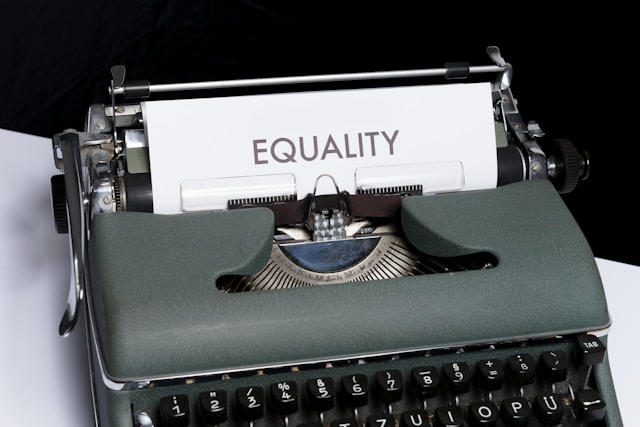The Causes of the Gender Pay Gap in Marketing
The gender pay gap in marketing – are we still talking about this? Well, unfortunately, the gender pay gap is still very much existent across a wide range of industries.
Before we get into the nitty-gritty of the gender pay gap causes, perhaps it’s worth considering what the gender pay gap actually is and how it impacts female marketers.
What is the gender pay gap in the UK?
When it comes to what the gender pay gap is, let’s lay down the facts: according to a range of studies, women in marketing earn, on average, considerably less than their male counterparts, with the pay gap widening at higher levels of seniority. In fact, female marketers are paid, on average, 16.5% less percent less than male marketers.
So, why is this?
Are male bosses simply so misogynistic that they do not believe that women should earn as much as men? Are women just 16.5% worse at their roles? Let’s not be so hasty. In a debate once leaning towards sexual discrimination, I have done some research into the causes of the gender pay gap and come across a fascinating insight. Let’s delve into more detail.

What is the cause of the gender pay gap?
Currently, we are turning to several explanations which leave many talented female professionals feeling frustrated and disillusioned – and you’d be surprised to learn that the gender pay gap doesn’t just stem from gender discrimination but from a combination of systematic, societal, and individual factors. Let’s jump right in and discuss the causes of the gender pay gap.
First, let’s get the obvious one out of the way! Discrimination based on gender is one of the main causes of the gender pay gap in marketing. Despite legal protections against this factor, implicit biases and stereotypes still arguably influence actions such as hiring, promotions, and salary decisions, which could result in the unequal treatment of women in the workplace. After all, assumptions about gender roles and abilities have long influenced what individuals assume a woman should do, causing them to be overlooked for leadership roles or paid less than men for comparable work.
2. Lack of leadership representation
Let’s do the maths: the lack of female representation in leadership positions may perpetuate the gender pay gap in marketing by limiting women’s access to higher-paying roles and opportunities for advancement. Men typically tend to dominate these roles in marketing organisations, where higher salaries and bonuses are up for grabs.
3. Motherhood penalty
The transition to motherhood can considerably impact women’s careers and the earning potential tied to this. Research shows that women are likelier to be penalised in the workplace concerning lower pay and secure fewer promotions compared to men and women without children. This ties into the traditional societal role of women as stay-at-home mothers. In fact, there are over 1.34 million stay-at-home parents in the UK, and the vast majority are mothers.
4. Lack of transparency in pay
Another main cause of the gender pay gap in marketing is the lack of pay transparency around salary and compensation practices. This sometimes allows disparities to go unaddressed and even unnoticed. When salaries are not openly discussed and challenged, it can be significantly easier for employers to justify paying females less than their male counterparts.
5. Pay negotiation
The main cause of the gender pay gap I found most interesting in my research was pay negotiation. I found that women are less likely than men to negotiate their salaries or advocate for themselves during salary negotiations or appraisals. This reluctance to negotiate may stem from several things, from societal expectations to a personal lack of confidence to a fear of backlash from management.
Unfortunately, this could result in a lower starting salary and less wiggle room for pay rises. In surveys, it was found that women were more than twice as likely to feel apprehensive about negotiating, whilst men negotiate four times more than women.
Additionally, insights revealed that women tended to be more pessimistic about how much money is available when negotiating and, therefore, typically ask for less in these scenarios. Indeed, whilst further research clashed with these surveys in arguing that women negotiated more, it supported that women were likelier to ask for a lower amount than men.
How to address the gender pay gap in marketing
Now that you’re more clued up on the facts and causes of the gender pay gap in marketing, let’s consider how this prominent issue can be addressed and how we can bridge this divide between the sexes.
Businesses should:
- Take accountability
The first way to tackle the causes of the gender pay gap is to follow through with transparency. Employers need to commit themselves to more transparent salary practices, conducting regular pay audits and disclosing salary ranges for all positions.
By shining a light on pay disparities and holding themselves accountable, businesses can take proactive steps towards closing the gender pay gap. With an explicit criterion for determining salaries based on skills, years of experience, and performance, companies can start to determine wages based on fair factors.
If you’re a business, just remember this: you may be able to boost your employee acquisition and retention rate with this strategy!
- Conduct training for advancement
Companies need to implement programmes, including education, training, and promotion opportunities, to start empowering women who deserve it. Professional development opportunities may equip women with the skills, confidence, and resources they need to step up and start earning more.
- Support inclusion
Some male-dominated companies should consider factoring in inclusion in the hiring process—especially if previous hiring has been a result of unconscious bias. By being more open to women filling roles, companies can actively seek out and support female talent at all levels to stamp out the gender pay gap.
- Create networking opportunities
Businesses should foster a supportive environment where women can network, mentor, and uplift one another in the workplace. By establishing formal mentorship programmes and peer support networks, female marketers can access the guidance and encouragement they have been missing, enabling them to navigate their careers better.
Employees should:
- Defy the fear of confrontation!
If you’re a woman in marketing and have never asked for a pay rise, it’s time to evaluate your skills, experience, and overall performance in your current role.
Do you think you deserve more money? Be honest with yourself and your managers. Don’t be afraid to ask.

A round-up on the gender pay gap causes in marketing – what have we learned?
Overall, the gender pay gap isn’t just a societal issue—it’s a business issue with far-reaching implications. Beyond the more obvious financial and societal repercussions, the gender pay gap undermines productivity, innovation, and engagement in the workplace, which may be hindering your company’s overall success.
When considering the causes of the gender pay gap, it appears that this is a tricky issue that needs to be addressed by all stakeholders. Only by raising awareness and advocating for change can we close the gender pay gap in marketing together.
Contact a female marketer
If you want to support women in marketing further and need content marketing services, be sure to contact me for quality writing. After all, talent generates success—not gender.

